After a £70million, 17-years in the making renovation, Neil Sowerby finds himself in pampered heaven
WHAT a difference a year makes. The last pool I’d wallowed in was pre-Christmas in St Lucia at a spa/wellness resort called BodyHoliday, offering everything from dawn tai chi sessions and beach workouts with Olympian Colin Jackson to rum punch-fuelled sunset cruises. Far away in somewhere called Wuhan news of a strange virus was just filtering out.
The project was in part to lure back his wife, Georgiana Cavendish, who was spending far too much of her time and his money in Bath
Cut to autumn 2020 and downtown Buxton felt decidedly less tropical than St Lucia as I unleashed my rusty breaststroke, the heated rooftop outdoor pool steaming around me. No palm trees, no warm crashing surf, but in a world turned upside down the Buxton Crescent Spa Hotel, on the cusp of reopening after a £70million, 17-years in the making renovation, felt like pampering heaven.

The town’s Georgian centrepiece is turning heads once again after decades of neglect. Will it put the town back on the major tourist map?
Geographically Buxton’s about as far as it gets from either coast, at a chilly 300m above sea level, it's England’s highest market town. So rather than a dip in the briny deep or sand between your toes, its resort status has been down to ‘taking the waters’… and as a base for exploring the Peak District’s more rugged charms.

In the days before the working classes enjoyed their cheap and cheerful Wakes Weeks in Blackpool or Skegness the northern gentry’s vacation of choice was here in pursuit of the curative powers of its geothermal springs. Plus a load of balls (of the costumed variety).
In truth, Buxton has always been a rather grey second cousin of Bath, the hedonistic acme of 18th and 19th Century fashionable society, but the Chatsworth-based Fifth Duke of Devonshire worked wonders in the 1780s to transform it from a 200 population hamlet (albeit with a famous mineral well) into a chic destination. It was in part to lure back his wife, Georgiana Cavendish, who was spending far too much of her time and his money in Bath.
Forget that pallid movie, The Duchess, with Keira Knightley in the title role; the real Georgiana was a formidable woman and certainly appreciated the ambition of her aloof husband William in lavishing so much of the family copper mining wealth on the project. “I never saw anything so magnificent as the Crescent,’’ she wrote. “Though it must half ruin us, my spirit makes me delight in the Duke’s doing it.”
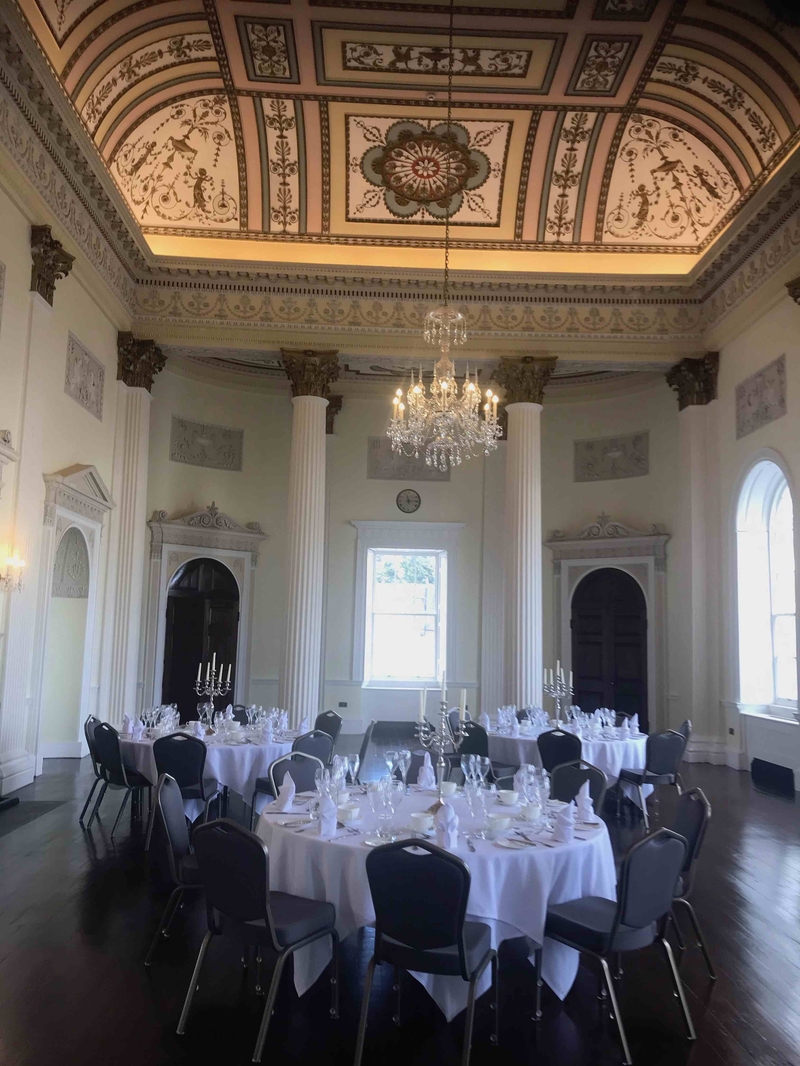

More than just a riposte to Bath’s Royal Crescent, this was the culmination of architect John Carr’s Buxton handiwork. We’ve had to be patient for this sleeping beauty to be restored to life. It took the kiss of much public money and the embrace of European spa hotel specialists Ensana to get it over the finishing line. The Grade 1 listed Georgian features have had to be sensitively married to contemporary wellness luxury. First impressions, before the Covid-ly restricted crowds turn up, were hugely favourable.
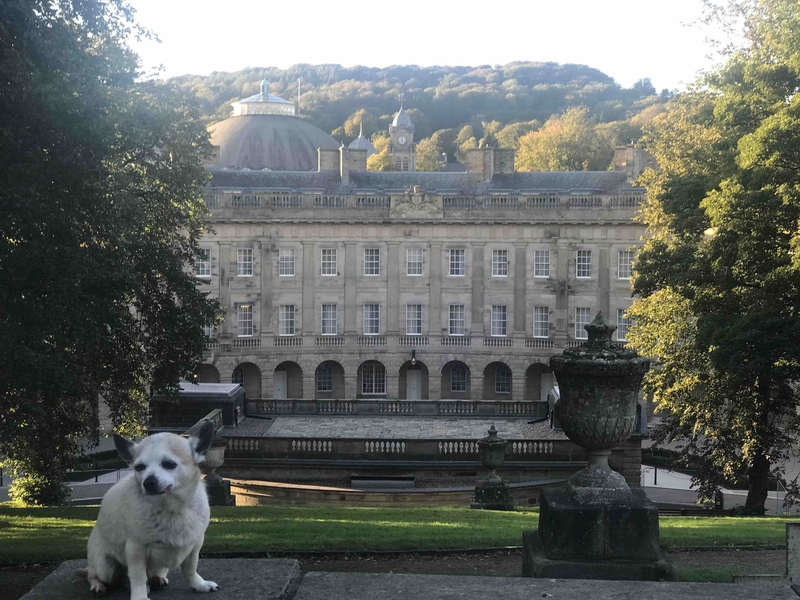
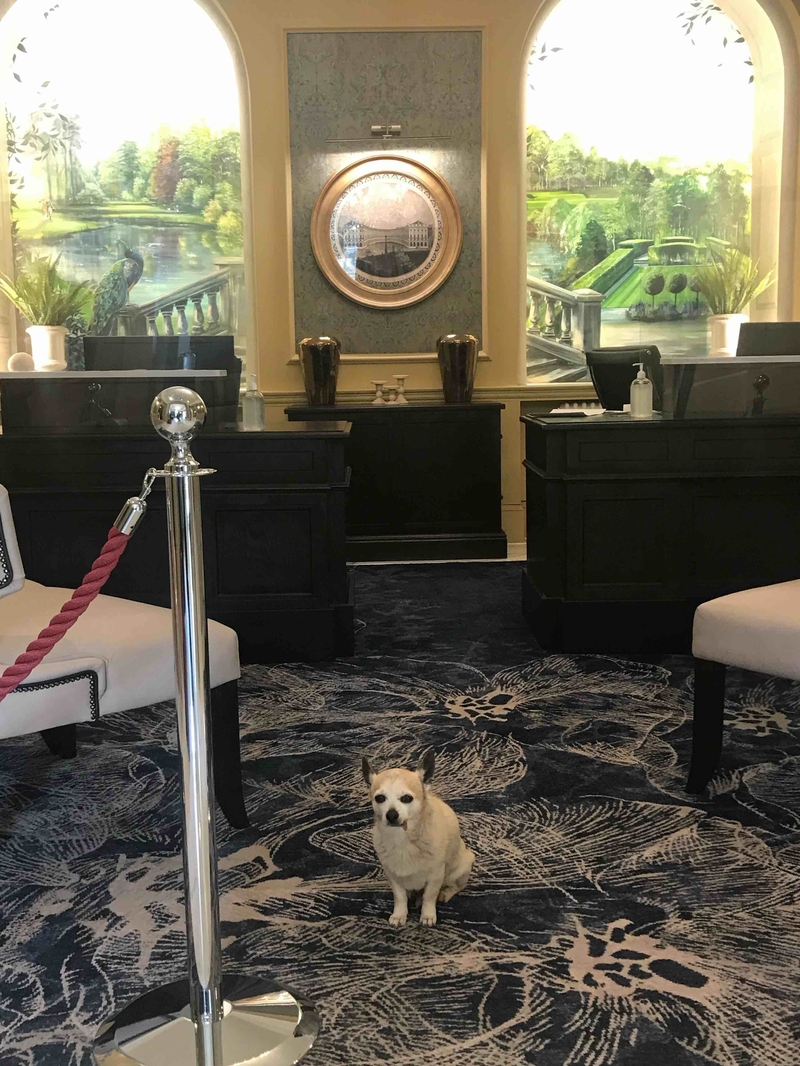
This kind of mixed public heritage/commercially targeted project can’t afford to be snooty. And it didn’t feel like that. They are dog-friendly, always a winner in my eyes, and opening prices aren’t extortionate, starting at £125, breakfast included, for arguably the most characterful lodgings among the 81 on offer, the cosy attic rooms. The bonus is beams and close-ups of honeyed stone eaves.


At twice that price, our junior suite, done up in burgundy and dove grey, came with a four-poster, roll-top bath and a dog-bed for our chihuahua, Captain Smidge.

He, of course, wasn’t allowed in the spa complex, which extends over several levels, linked by a colourful mermaid mural, culminating in a cafe and that (partially) outdoor pool. We’d like to have seen how Smidge coped with the stalactite-pronged Salt Cave. My wife tried it out and claims to have felt the benefits. What are they? Single salt apparently has an anti-bacterial effect, the ions help dissolve mucus, bringing about a cleansing effect in the respiratory system. Which may be helpful in these corona-ridden times.
Other features include a bio-sauna, steam room, infra-red sauna, ice fountain, Finnish sauna and gym, as well as eight treatment rooms, including a couples’ suite.


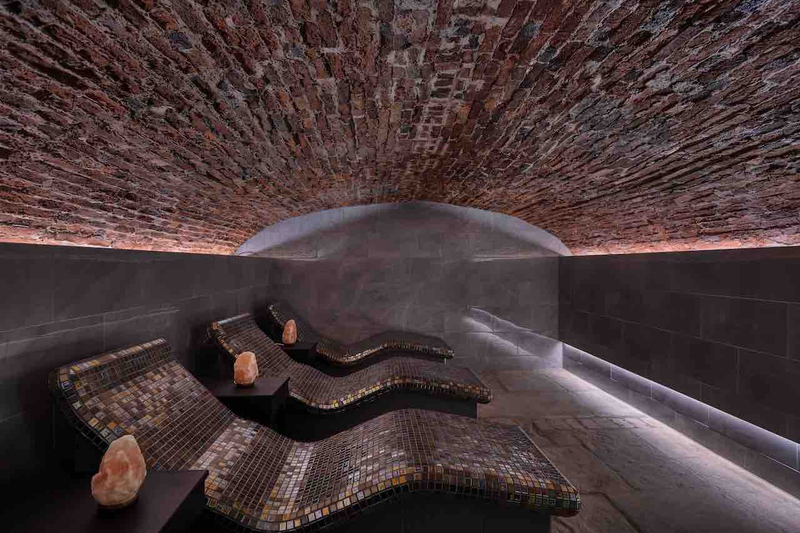
The Ensana brand’s big thing, though, is mud. One signature treatment is the Thermal Mud Pack, which uses a mineral rich variety sourced from Heviz in Hungary, one of the central European countries that are the heartland of the 26-strong chain.
Other treatments are less messy. My wife chose ‘Wave Balance’ a vibro-acoustic combination of therapy, wellness, and meditation on on a water couch. In contrast I tested my boundaries with a Comfort Zone Body Active massage, which featured a body mask made up of yellow clay from Brazil and plankton extract, plus Tui-Na massage techniques. Really aimed at fitness devotees, so I don’t really count, but it was a fascinating hands-on experience.
My real chill-out time came in the Bar Lounge sipping Thornbridge Jaipur IPA brewed down the road in Bakewell as a pre-prandial before a dinner featuring local grouse and venison in the hotel’s Dining Room.

The Lounge wallpaper has been specially designed with extinct animals as a homage to Charles Darwin’s grandfather Erasmus, who once visited Buxton to take its waters. And in 2020 it’s the hydrotherapy options that are the real link to the Buxton tradition.
Which bring us to the question: what’s the best way to imbibe Buxton mineral water? From a ®plastic bottle, ancient free tap or a shared bathful? Something to ponder as I road-tested another of the three pools in the Ensana spa complex. The Thermal Pool dates back to the 1850s, hence the iron-pillar and glass influence of the contemporary Crystal Palace. Its latest incarnation is a stylish homage to the constant 27C spring that first led folk to ‘take the waters’ on this once bleak spot. A stained glass dome bathes you in blue light.
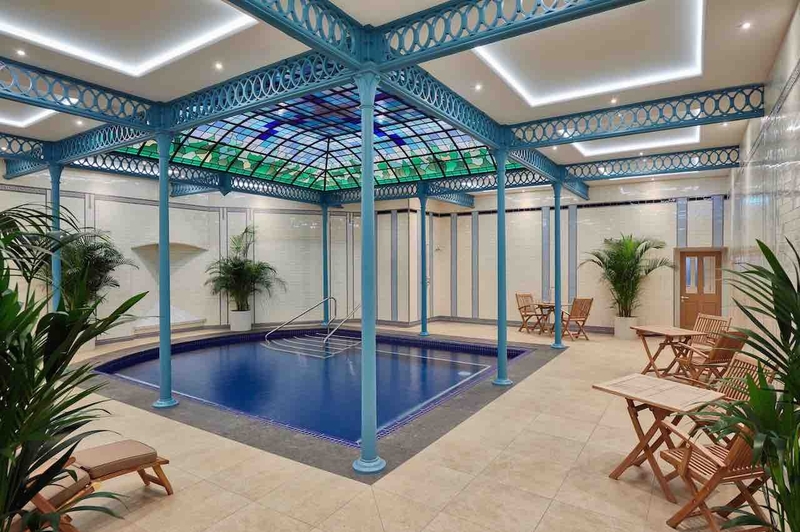
Yes, you can drink the heated and untreated mineral water from this pool, replenished every day, and get the health benefits of the high magnesium content, but it’s hard to reconcile that with bodies sharing it with you.
Alternatively, at any supermarket or filling station across the land you could spend around 60p for a small bottle of it, helping swell the profits of global giant Nestlé. Alternatively, fill a flagon with the same liquid for free at St Anne’s Well, as Buxtonians are allowed courtesy of a 16th century act of parliament.
There’s always enough to go round with a million litres a day flowing out of the geothermal source 1km under ground, filtering and refining rainwater that fell 5,000 years ago. The drinking well has been lauded for its curative powers since Roman times, in the 1520s was dedicated to St Anne, mother of the Virgin Mary, and another Mary, Queen of Scots, is among the famous to have partaken.
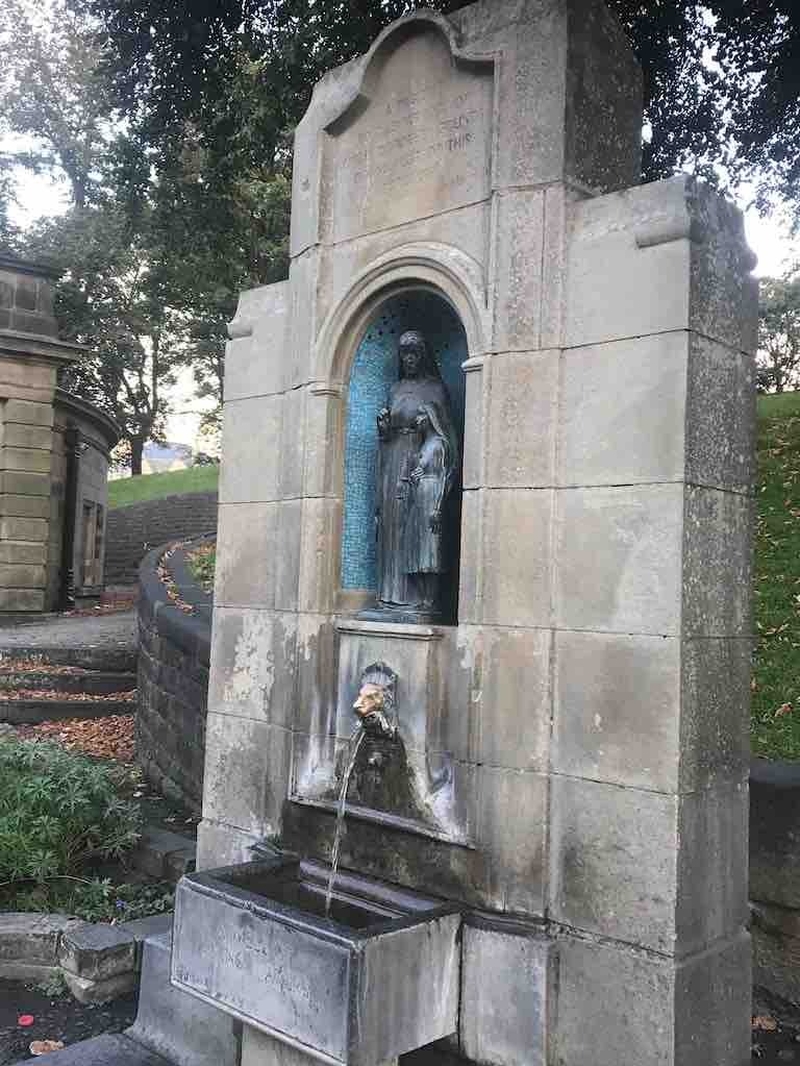
Today it is just a simple tap set in stonework at the foot of The Slopes park facing the Crescent. We took a sip en route for tipples more powerful. George Street, just behind the Crescent, is home to two terrific craft beer bars – RedWillow, an offshoot of the Macclesfield brewery and the tap house of local hoppy heroes, Buxton Brewery. Well, it is another way of taking the waters.
Fact file
Buxton Crescent Spa Hotel, The Crescent, Buxton. SK17 8BH. Now open. Rates start from £125 per night based on two people sharing an Attic Room on a B&B basis. Access to the spa i included in all rates. The treatments we took cost £75 a head. Full programme on offer here. The hotel is a five minute walk from Buxton railway station – direct journey time from Manchester Piccadilly is one hour.












